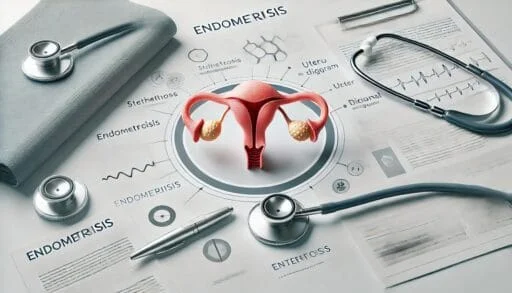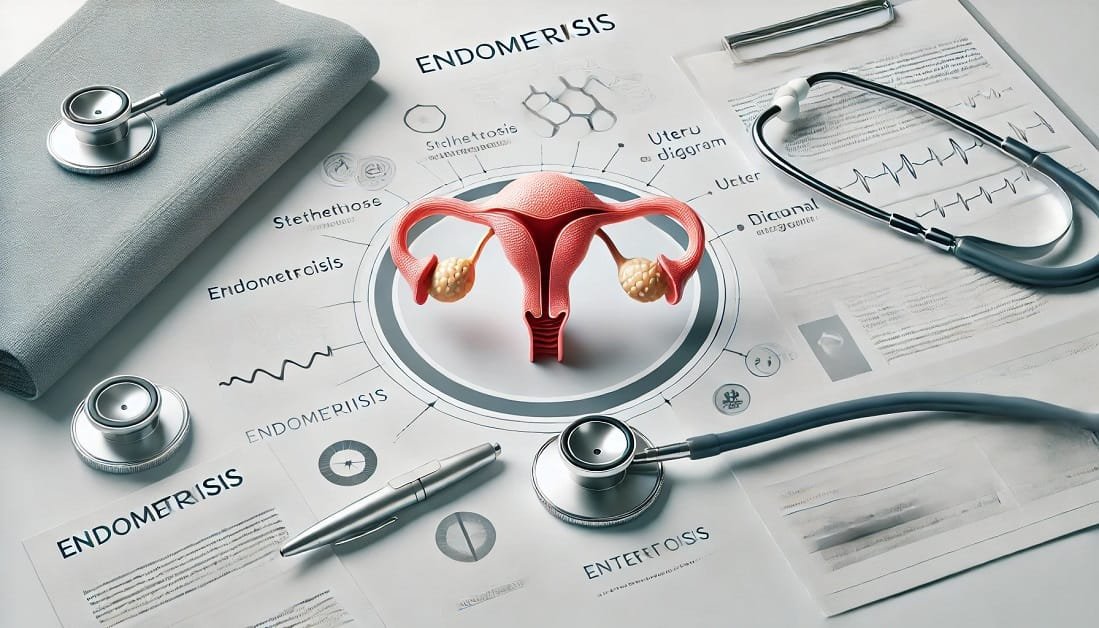1. Introduction: Understanding Endometriosis and Its Impact
Endometriosis is a condition that affects millions of women worldwide, yet it often goes undiagnosed or misunderstood. It occurs when tissue similar to the lining of the uterus begins to grow outside of it, leading to a host of symptoms that can severely impact a woman’s quality of life. The pain, fatigue, and emotional toll that come with chronic pain make it clear why endometriosis is more than just a medical condition—it’s a daily challenge.
For many women, life with endometriosis is marked by unpredictable pain, infertility struggles, and a constant battle to find effective treatment options. From missed workdays to compromised social activities, the condition affects not only physical well-being but also mental health. Women with endometriosis often find themselves navigating a world that doesn’t fully understand the intensity of their struggles.
But as the discussion around women’s health evolves, the question remains: Is endometriosis a disability? It’s a question that’s become more pertinent as awareness grows about the severity of the condition. Some women find that the disability benefits they need to manage their condition are difficult to access, while others feel the societal stigma surrounding chronic pain and invisible illnesses prevents them from receiving the recognition and support they deserve.
The complexities surrounding endometriosis not only challenge medical professionals but also raise questions about the broader social and legal frameworks. Are women with endometriosis entitled to the same recognition and support as those with other debilitating conditions? Let’s delve into the implications of this question and uncover the realities many face in their daily lives.
Table of Contents
2. What Is Endometriosis?
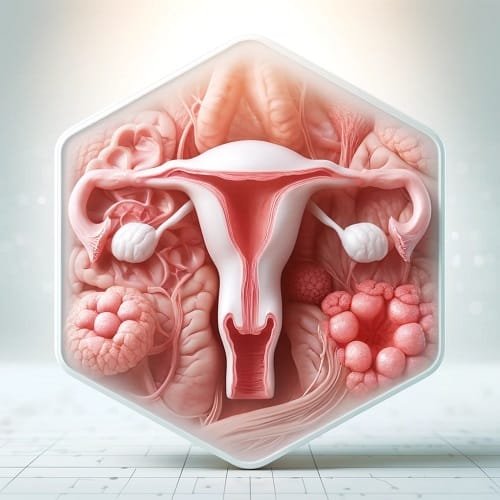
Endometriosis is a medical condition where tissue similar to the endometrial tissue, which normally lines the inside of the uterus, begins to grow outside of it. This tissue can be found on the ovaries, fallopian tubes, the outer surface of the uterus, and even other organs in the abdomen. Each month, during the menstrual cycle, this tissue behaves like regular uterine tissue: it thickens, breaks down, and sheds. However, unlike normal tissue, this blood has nowhere to go, which causes inflammation, scar tissue, and adhesions to form.
The primary symptoms of endometriosis include chronic pelvic pain, especially during menstruation, painful periods, and discomfort during or after sexual intercourse. For many women, these symptoms can be so severe that they interfere with their daily lives, affecting their ability to work, engage in social activities, or even perform routine tasks. The intensity of the chronic pelvic pain varies from one individual to another, but for some, it can be debilitating.
Beyond the physical pain, endometriosis can also cause infertility, with studies showing that about 30-50% of women with this condition face challenges in conceiving. The reason for this is still not fully understood, but it’s thought that hormonal imbalances and scarring from the tissue growth may interfere with the normal function of the reproductive organs. This aspect can add an emotional layer to the already challenging experience, as many women struggle not only with pain but also with the fear of being unable to start a family.
In addition to the well-known symptoms, endometriosis can also cause fatigue, bloating, and gastrointestinal issues, further impacting an individual’s quality of life. Given these symptoms, it’s easy to see why the question of is endometriosis a disability? is so frequently asked. The physical, emotional, and social burdens of this condition can be overwhelming, often leaving those affected wondering if their daily struggles qualify as a disability.
3. The Symptoms of Endometriosis: How Does It Affect Daily Life?
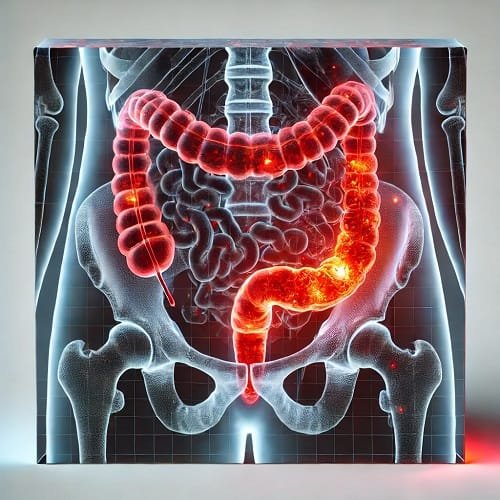
The symptoms of endometriosis can be wide-ranging and often vary in intensity from one individual to another. However, the common thread is the profound impact these symptoms have on a person’s daily life. One of the most noticeable symptoms is abnormal menstrual bleeding, which can include heavy periods, bleeding between periods, or spotting, leading to additional discomfort and unpredictability.
Another common symptom of endometriosis is painful intercourse. This occurs when the tissue that has grown outside the uterus causes irritation or scarring on surrounding organs, making intimacy uncomfortable or even intolerable for many women. For individuals dealing with endometriosis, the pain often extends beyond just the menstrual cycle, affecting their relationships and emotional well-being.
Beyond the physical pain, fatigue is another hallmark symptom that significantly affects daily activities. The exhaustion associated with endometriosis can make even simple tasks feel overwhelming. Many women experience fatigue that isn’t relieved by rest, often exacerbated by the body’s constant fight against chronic pain and the hormonal fluctuations that accompany the condition. This persistent tiredness can have a profound impact on professional and personal life.
Additionally, abdominal bloating is a common complaint among individuals with endometriosis, often making them feel uncomfortable or self-conscious in social settings. This bloating, coupled with nausea and gastrointestinal discomfort, can further impair one’s ability to function normally throughout the day.
For those with endometriosis, managing these symptoms often involves missing work or school, causing a ripple effect in their personal and professional lives. These work and school struggles can lead to feelings of isolation, frustration, and uncertainty about the future. With so many aspects of life affected by the symptoms of endometriosis, it’s no wonder that so many people ask, is endometriosis a disability? The toll it takes on daily life makes this a valid question.
4. Medical Recognition of Endometriosis: Does It Qualify as a Disability?

Endometriosis is widely recognized by medical professionals as a chronic illness that can severely affect a person’s health and well-being. However, when it comes to whether endometriosis qualifies as a disability, the situation becomes more complicated. The answer varies depending on the country, healthcare system, and even the specific organization in question.
In some countries, endometriosis is not automatically classified as a disability, but rather as a health condition that can cause significant pain and suffering. For instance, in the United States, there is no universal acknowledgment of endometriosis as a disability under Social Security Disability (SSD). SSD typically recognizes conditions that prevent individuals from working for a prolonged period. While chronic pain and the impact on quality of life are well-documented aspects of endometriosis, not all individuals with the condition are unable to work or function at a level that qualifies them for disability benefits.
However, the situation can change if the symptoms are severe enough to interfere with basic daily activities, including employment. In such cases, individuals may apply for a disability claim through the Social Security Administration (SSA), arguing that their condition significantly limits their ability to work. The process of claiming disability benefits for endometriosis is often challenging, requiring extensive medical documentation, including proof of the condition’s impact on one’s ability to perform tasks. Many individuals are rejected on their initial claims, adding another layer of frustration for those already struggling with the pain and limitations of endometriosis.
Different health organizations have varying guidelines for recognizing endometriosis as a qualifying health condition. For example, in countries with nationalized healthcare systems, endometriosis may be recognized as a chronic illness that entitles individuals to certain benefits, including financial support and access to specialized treatments. In other nations, the process may be more restrictive, requiring a diagnosis from specialists and evidence that the individual’s daily life is severely impaired.
For many individuals with endometriosis, one of the biggest hurdles in obtaining disability benefits is the fact that the disease is often invisible. Since the condition primarily affects the reproductive organs, which are internal, many symptoms like chronic pain or abnormal menstrual bleeding are not always easily understood or recognized by those outside the medical field. This invisibility can lead to doubts about the legitimacy of the condition, making it harder for people to secure the support they need.
Ultimately, the question is endometriosis a disability? depends not just on medical recognition but also on the policies of specific governments and organizations. It’s clear that the path to recognition and disability benefits is often filled with obstacles, leaving many individuals with endometriosis without the support they deserve.
ALSO READ
Heating Pad for Endometriosis Pain: How It Provides Relief
Castor Oil for Endometriosis: Proven Benefits & Uses
5. The Debate: Is Endometriosis Legally Considered a Disability?

The question, “Is endometriosis a disability?”, is not only a medical or societal issue but also a legal one. While many people with endometriosis experience significant disruption to their lives due to the chronic pain and other symptoms, legal frameworks vary significantly in how they treat the condition. In many jurisdictions, disability rights and the legal status of a condition are governed by specific disability law that outlines what qualifies as a disability and what entitlements individuals can claim. The debate surrounding endometriosis and its legal classification hinges on several factors, including the severity of symptoms and the extent to which they impair daily functioning.
In countries like the United States, disability law typically grants benefits for conditions that prevent individuals from engaging in substantial gainful activity, but endometriosis does not automatically fall under this category. While the Social Security Administration (SSA) recognizes a number of chronic illnesses as qualifying for disability claims, endometriosis is not universally included. To qualify for benefits, individuals must demonstrate that their condition causes such severe impairment that it prevents them from working. This means that many with endometriosis must undergo lengthy assessments and legal processes to prove their case.
In the workplace, accommodations are a key issue. While disability rights law in many countries requires employers to provide reasonable workplace accommodations for individuals with qualifying disabilities, those with endometriosis often find that their condition is not taken seriously. The social stigma surrounding conditions like endometriosis, which are primarily chronic pain conditions, can make it difficult for individuals to advocate for themselves at work. Since endometriosis is not always visible and its effects can vary greatly between individuals, some employers may be unaware of the accommodations necessary for workers managing the condition.
From a legal standpoint, one of the key challenges for those with endometriosis is proving that their pain and symptoms are significant enough to meet the requirements for disability claims. The condition’s fluctuating nature makes it harder to quantify in terms of legal definitions of disability, which often require clear, consistent limitations to qualify for benefits. Furthermore, as pain management for endometriosis varies from person to person, some may manage their symptoms well with medication or lifestyle adjustments, while others may find themselves completely incapacitated.
Ultimately, the question of is endometriosis a disability? remains a matter of legal interpretation and social context. The lack of clear legal status for the condition means that many women are left to navigate complex legal systems to obtain the support they need.
6. Impact on Mental Health: The Psychological Toll of Endometriosis
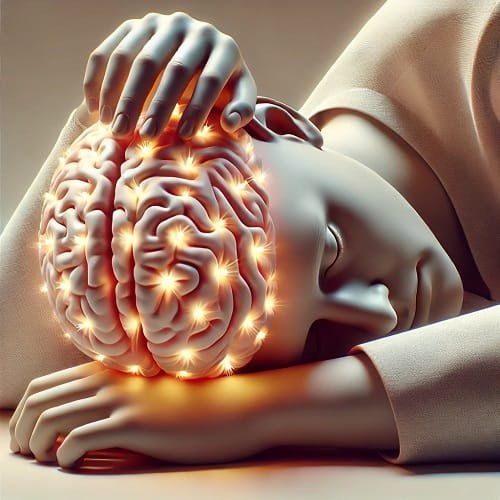
Living with endometriosis not only takes a physical toll but also has a profound impact on mental health. The constant chronic pain, coupled with the uncertainty of when symptoms will flare up, can contribute to significant emotional distress. Many individuals with endometriosis report experiencing depression and anxiety due to the persistent discomfort and the unpredictability of their condition. The burden of coping with pain and managing daily tasks while dealing with the emotional toll is overwhelming for many.
The psychological effects of endometriosis can also be compounded by the social stigma surrounding chronic conditions. People often don’t fully understand the invisible nature of the pain, leading to feelings of isolation. For some, this can trigger anxiety related to social situations or worries about their future, including their ability to work, form relationships, or have children. The combination of physical discomfort and emotional strain can feel like an unrelenting cycle.
Furthermore, the stress caused by chronic pain often exacerbates the mental health challenges, creating a feedback loop of chronic pain stress. Coping mechanisms, such as mindfulness, therapy, and support groups, can be beneficial for managing the emotional burden. However, without proper support and treatment, the mental toll of endometriosis can lead to long-term psychological challenges. This raises the question: Is endometriosis a disability? The psychological impact is often just as debilitating as the physical symptoms, making it crucial to consider both aspects when determining whether endometriosis qualifies as a disability.
7. Support Systems and Treatment: Navigating Life with Endometriosis

Living with endometriosis requires a multifaceted approach that includes both medical treatments and emotional support. The treatment options for endometriosis vary depending on the severity of the condition and the individual’s specific symptoms. Pain management is a key aspect of treatment, and many women rely on a combination of medications, hormonal therapies, and alternative treatments like acupuncture or dietary changes. In more severe cases, surgery options, such as laparoscopy, may be recommended to remove the endometrial tissue growing outside the uterus.
In addition to medical treatments, individuals with endometriosis often benefit from lifestyle changes aimed at reducing symptoms. Maintaining a healthy diet, regular exercise, and stress management practices like yoga or mindfulness can play a significant role in managing pain and improving overall well-being.
However, managing endometriosis is not just about physical treatments—it’s also about finding emotional and psychological support. Support groups are a valuable resource for many, as they provide a space to connect with others who understand the unique challenges of living with endometriosis. Additionally, having a strong network of family, friends, or therapists offering emotional support can make a world of difference.
Given the comprehensive nature of these treatments and support systems, navigating life with endometriosis can still be challenging. This raises the question: Is endometriosis a disability? The impact it has on both physical and emotional health underscores the importance of recognizing it as a potentially disabling condition.
8. Social and Workplace Accommodations: How Society Can Support Individuals with Endometriosis
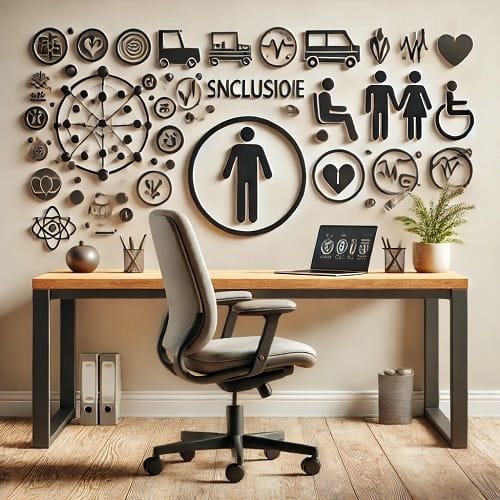
Endometriosis remains a largely misunderstood condition, and the social stigma surrounding it often prevents those affected from seeking help or accommodations. For many individuals with endometriosis, the chronic illness can be invisible to others, leading to skepticism about the severity of their symptoms. This can make it difficult to gain the necessary social support, both from family members and colleagues.
In the workplace, disability rights in the workplace should extend to individuals with endometriosis, as the condition can severely affect one’s ability to perform job functions. Workplace accommodations are essential for those struggling with chronic pain or fatigue due to endometriosis. This might include flexible working hours, the ability to take more frequent breaks, or even working from home when pain becomes too overwhelming. Creating an inclusive work environment that recognizes chronic illness management can not only help employees with endometriosis thrive but also improve their overall well-being.
Employers and organizations must also take the lead in raising awareness about endometriosis and offering disability employment options for individuals with the condition. By fostering an understanding and supportive environment, they can make it easier for individuals to manage their symptoms while contributing productively to the workforce. This shift is necessary for a broader recognition of endometriosis as a potential disability, ensuring those affected receive the necessary accommodations and empathy.
9. Frequently Asked Questions (FAQ)
1. Is endometriosis considered a disability?
The question, “Is endometriosis a disability?”, does not have a straightforward answer. While endometriosis can severely impact an individual’s life, making daily activities difficult, it is not automatically recognized as a disability by all legal systems. However, in some cases, individuals may qualify for Social Security Disability Insurance (SSDI) if their symptoms are disabling enough to prevent them from working.
2. What is the disability claim process for endometriosis?
The disability claim process for endometriosis usually involves proving that the condition significantly impairs your ability to perform daily tasks or maintain employment. Applicants may need to provide medical documentation showing the severity of symptoms of endometriosis, such as chronic pain or fatigue, and how these symptoms affect work and daily life.
3. How does endometriosis affect work?
Many individuals with endometriosis face challenges in the workplace due to chronic pain, fatigue, and other symptoms like bloating or painful periods. Endometriosis and work can sometimes be incompatible without reasonable accommodations, such as flexible hours or the ability to take breaks when symptoms flare up.
4. What are disability laws regarding endometriosis?
Disability laws vary by country, and in many places, endometriosis is not automatically considered a disability under employment or social security rules. However, individuals can still apply for benefits if they can demonstrate the severity of their symptoms and the impact on their daily lives.
10. Conclusion: Moving Forward with Endometriosis and Disability Rights
In conclusion, endometriosis is a complex and often debilitating condition that significantly affects individuals’ daily lives, raising the important question, “Is endometriosis a disability?” While disability recognition varies, it’s clear that those living with chronic illness require better chronic illness support and accommodations, both in the workplace and in society. Increased awareness for endometriosis is crucial in fostering understanding and providing the necessary resources to help those affected. Moving forward, it’s essential to continue advocating for disability rights for individuals with endometriosis, ensuring they receive the support they need to live healthier, more fulfilling lives.
